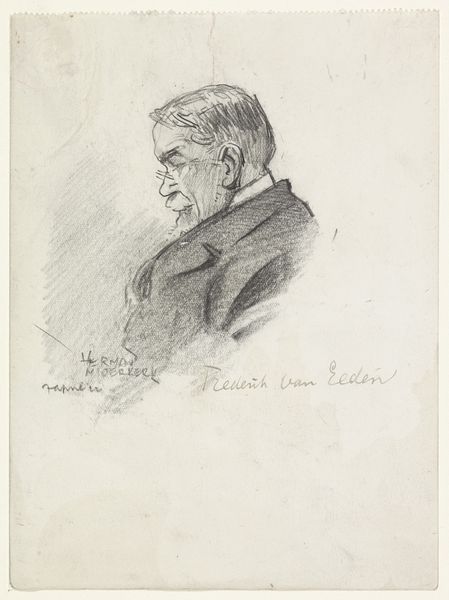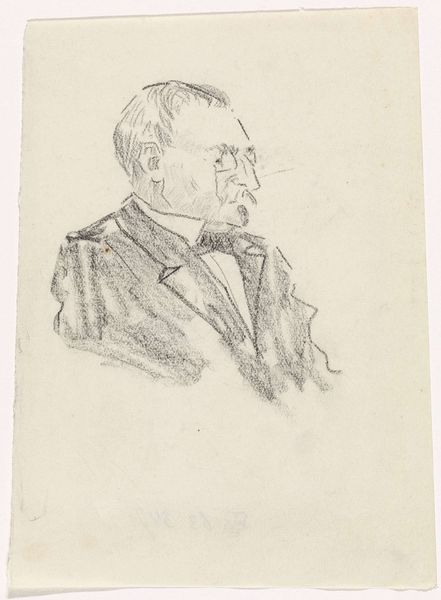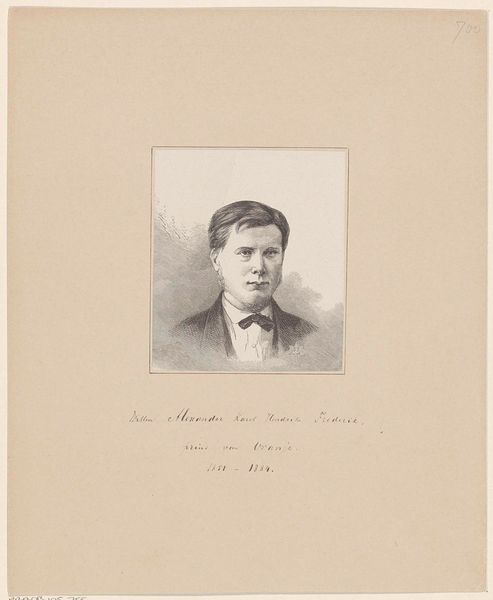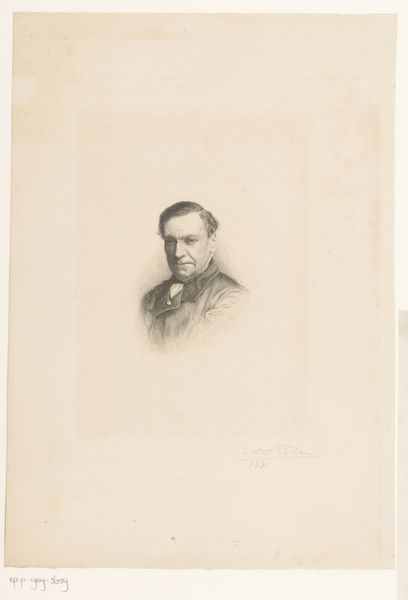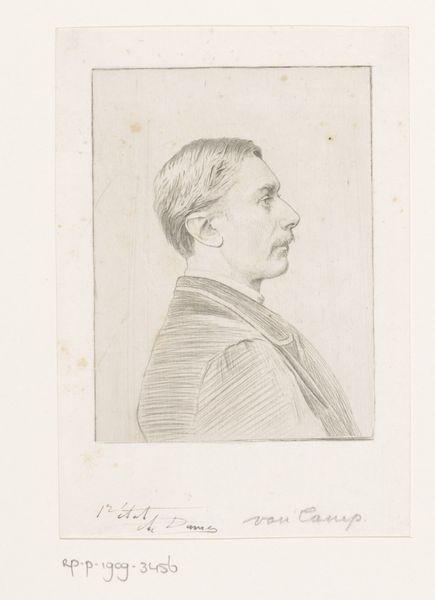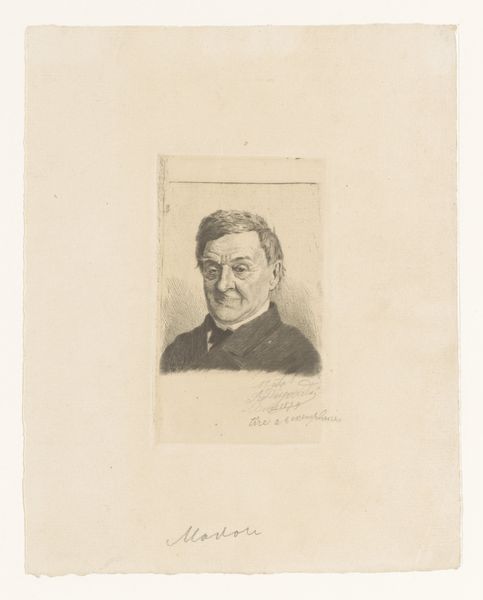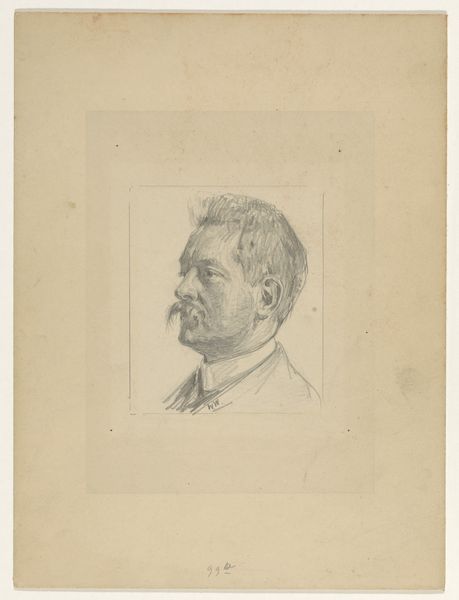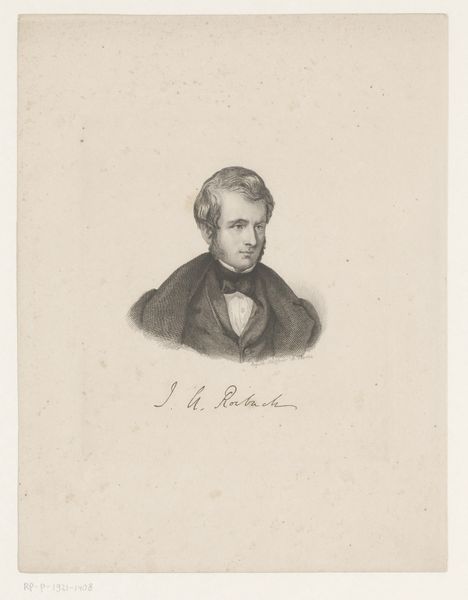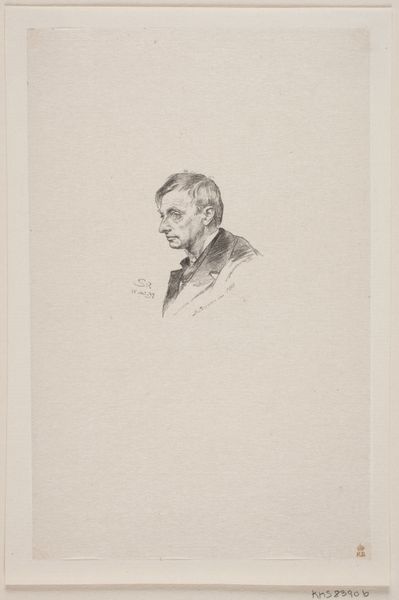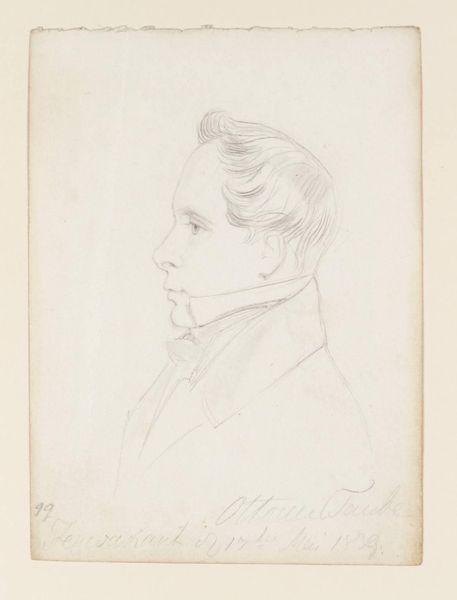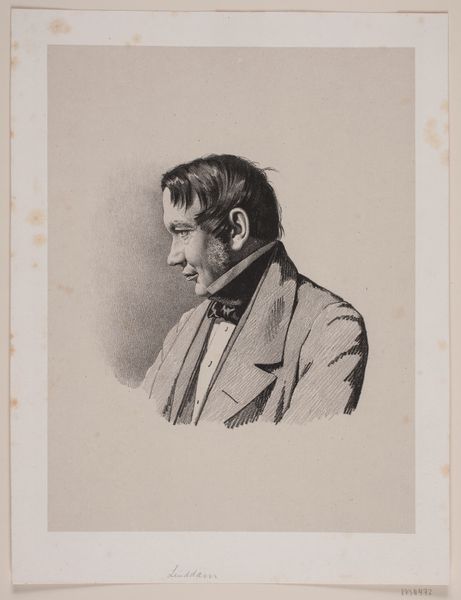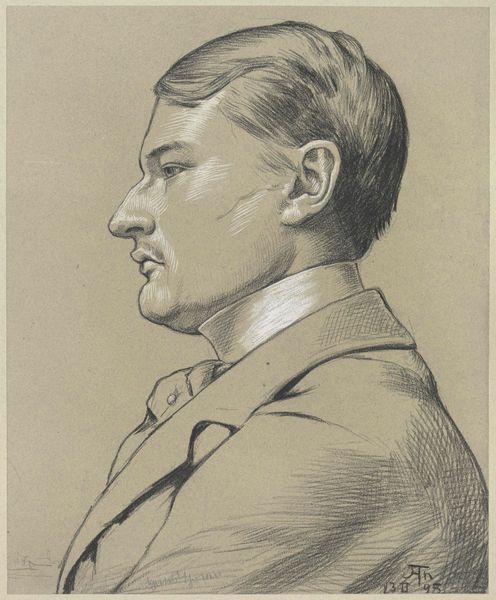
drawing, pencil
#
portrait
#
drawing
#
romanticism
#
pencil
#
realism
Dimensions: 163 mm (height) x 111 mm (width) (bladmaal)
Curator: Here we have Wilhelm Marstrand's portrait of Constantin Hansen, a pencil drawing dating from 1830 to 1834. What's your first take? Editor: Brooding. Definitely evokes a Romantic sensibility, that delicate rendering adding to a feeling of introspection. Look at how light captures his cheek. Curator: It's interesting you say that, as Marstrand himself was deeply invested in the Copenhagen art scene. One wonders about the dynamic between artist and subject—did Hansen commission it or was this more a study between peers? What do you notice in its materiality? Editor: Well, clearly the medium is integral to its aesthetic. The pencil lends itself beautifully to the gradations in shading and detail. Note how economical his rendering is; it's quite simple in materials and technique, yet achieves remarkable nuance in portraying mood. Did pencil drawings of fellow artists have any monetary value in that community at the time? Curator: Good question. Pencil sketches, while not as "high status" as oil paintings, played a vital role. Think of them as artistic currency, gifts exchanged within a network. Patronage was still a key factor for artistic survival. And the very paper and graphite, their cost, origin… the network of suppliers in a society experiencing massive changes. Editor: Indeed, considering the period, this drawing exists at the intersection of shifting social roles and expectations for artists. How they made a living. This was well before photography, which democratized image-making, of course. Did these portrait sketches circulate publicly? Curator: Probably not beyond a fairly close circle. These images contributed to shaping Hansen’s reputation amongst his peers; it’s an artistic calling card within a social context. Museums like the SMK, where this work is located today, play a part in defining these figures' roles in history. Editor: It's fascinating to consider how something seemingly so simple could carry so much weight in terms of social dynamics, artistic practice and materiality. I look at this drawing now and understand its multiple dimensions more fully. Curator: Precisely! It brings a unique lens to understanding the socio-artistic climate of 19th-century Copenhagen.
Comments
No comments
Be the first to comment and join the conversation on the ultimate creative platform.
